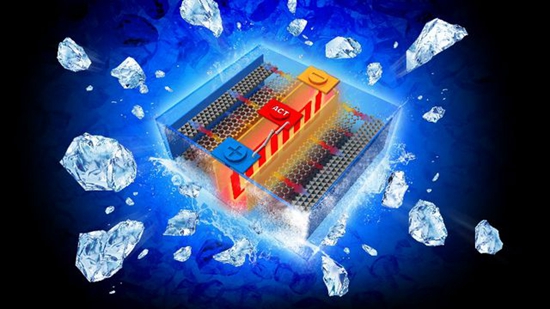What is the history of lithium batteries?
For billionaires, the new crown epidemic is like a 'gold rush'! The Deutsche Presse-Agentur said on the 17th that in 2022, the wealth held by the world's top ten richest people will jump from $700 billion to $1.5 trillion, an average daily increase of $1.3 billion, an increase that exceeds the past 14 years. These 10 people The wealth held by the world’s poorest 3.1 billion people is six times greater than that of the world’s poorest 3.1 billion people. The 10 richest Germans have increased their assets from the equivalent of about 125 billion euros to about 223 billion euros since the start of the Covid-19 pandemic, An increase of about 78%. This wealth is roughly equivalent to the total wealth of the poorest 40% of the population, or 33 million Germans.
In the future, demand for Lithium Batteries will grow as fast as the wealth of the rich during the pandemic.
Early R&D of Lithium Batteries
Lithium batteries were first used in pacemakers. Lithium-ion batteries have the advantages of extremely low self-discharge rate and flat discharge voltage, so that the pacemaker implanted in the human body can operate for a long time without recharging. Lithium batteries generally have a nominal voltage higher than 3.0 volts and are more suitable for integrated circuit power supplies. Manganese dioxide batteries are widely used in calculators, digital cameras, and watches.
In order to develop varieties with better performance, various materials have been researched, resulting in unprecedented products.
In 1992, Sony successfully developed lithium-ion batteries. Its practical application greatly reduces the weight and volume of portable electronic devices such as mobile phones, notebooks, and calculators.
What is the development process of lithium batteries?
In 1970, M.S. Whittingham of Exxon used titanium sulfide as the positive electrode material and metal lithium as the negative electrode material to make the first lithium battery.
In 1980, J. Goodenough discovered that lithium cobalt oxide can be used as a cathode material for lithium-ion batteries.
In 1982, R.R. Agarwal and J.R. Selman of the Illinois Institute of Technology discovered that lithium ions have the property of intercalating graphite, a process that is fast and reversible. At the same time, the safety hazards of lithium batteries made of metal lithium have attracted much attention. Therefore, people have tried to use the characteristics of lithium ions embedded in graphite to make rechargeable batteries. The first usable lithium-ion graphite electrode was successfully trial-produced at Bell Laboratories.
In 1983, M. Thackeray, J. Goodenough and others found that manganese spinel is an excellent cathode material with low price, stability and excellent conductivity and lithium conductivity. Its decomposition temperature is high, and its oxidizing property is much lower than that of lithium cobalt oxide. Even if there is a short circuit or overcharge, it can avoid the danger of burning and explosion.
In 1989, A.Manthiram and J.Goodenough found that a positive electrode with a polymeric anion would produce a higher voltage.
In 1991, Sony Corporation released the first commercial lithium-ion battery. Subsequently, lithium-ion batteries revolutionized the face of consumer electronics.

In 1996, Padhi and Goodenough found that phosphates with an olivine structure, such as lithium iron phosphate (LiFePO4), are more superior than traditional cathode materials, so they have become the current mainstream cathode materials.
With the widespread use of digital products such as mobile phones and notebook computers, lithium-ion batteries are widely used in such products with excellent performance, and are gradually developing into other product application fields.
In 1998, Tianjin Power Research Institute began commercial production of lithium-ion batteries.
On July 15, 2018, it was learned from Keda Coal Chemistry Research Institute that a special carbon anode material for high-capacity and high-density lithium batteries with pure carbon as the main component came out in the institute. The cruising range of the car can exceed 600 kilometers.
In October 2018, the research group of Professor Liang Jiajie and Chen Yongsheng of Nankai University and the research group of Lai Chao of Jiangsu Normal University successfully prepared a silver nanowire-graphene three-dimensional porous carrier with a multi-level structure, and supported metal lithium as a composite anode material. This carrier can inhibit the formation of lithium dendrites, thereby enabling ultra-high-speed charging of batteries, which is expected to significantly extend the "lifetime" of lithium batteries.
High quality lithium batteries supplier
Luoyang Moon & Star New Energy Technology Co., LTD, founded on October 17, 2008, is a high-tech enterprise committed to the research and development, production, processing, sales and technical services of lithium ion battery anode materials. After more than 10 years of development, the company has gradually developed into a diversified product structure with natural graphite, artificial graphite, composite graphite, intermediate phase and other negative materials (silicon carbon materials, etc.). The products are widely used in high-end lithium ion digital, power and energy storage batteries.If you are looking for Lithium battery anode material,click on the needed products and send us an inquiry:sales@graphite-corp.com
Due to the limited total amount of traditional energy, people have a huge demand for cleaner and greener new energy alternatives. Now, the emergence of graphene is unlocking the possibility of its application in the energy field, which can create a greener, more efficient, and sustainable future. Here Francesco Bonaccorso, Deputy Director of Innovation at the Graphene Flagship Program, explains how his researchers have developed a series of initiatives to bring graphene from the lab to the commercial market. Graphene has become a research hotspot for new materials in the 21st century. Graphene has been adopted by many industries, the most notable of which are healthcare and key material applications.
The development of graphene has brought huge fluctuations in the demand for Lithium Batteries, and the demand for Lithium Batteries will continue to grow in the future. You can contact us for the latest news on Lithium Batteries.
Inquiry us